from Instagram

from Instagram

Submission
Hack2O is a free, open-source services based on web platform that
provides community-driven and collaborative services to groups working
on water and justice issues. It features community forum and a mapped
inventory of grassroots initiatives and documentation pages related to
the civic struggle for water.
Cross-borders, refugees, undocumented people, hacktivists, migrants,
asylum seekers
— We Do Investigation ★
— We Share Methods & Tools ☵
— We Do Documentation ☀
— We Provide Workshops & Training for Free ♥
You can read and join our communities
forum https://forum.hack2o.eu/.
You will find comrades fighting for access to water, fighting against
water privatisation, investigative groups on pollution, documentation
on techniques and devices, etc.
This project is run by Petites Singularités ASBL, also epublishing
literature and books (always under Free Art
License) https://ps.lesoiseaux.io/txt/
Submission

Submission
On the evening of May 30th we took vengence on the machinery that is laying astroturf in the Kingsessing Rec center in West Philadelphia. We hit 3 machines, pouring sugar in the gas tanks, painting windows, and taking an impact drill to all of the tires (something that is incredibly easy and effective).
Astroturf is an environmental diaster as well as a public health concern & we reject its creation and its presence through out our city, at this site and the FDR meadows. Modern convenience at the the sacrifice of Earth and the health of aniamls (including children) will be fought back against. May this be a warning to all redevelopment projects that offer convenience to some while continuing to ravage the black and brown communities who take in the most pollution from redevelopment and benefit little to none.
Land defense is not only about pushing back against the destruction of green spaces but resistence to gentrification and settler mentality. Fighting the aesthetic desires of the rich & the continuation of a society of modernities that alienates us from each other,Earth & feeds the beast of capitalism. We will be back.
In the Lenape language “Kingsessing” means “a place where there is a meadow” May grass prevail and the industrial sports complex perish! May the youth be safe from further contaminates in their limited play spaces.
Also fuck Caterpillar industries! These bastards sell construction equipment to Israel to bulldoze homes in Palesitne.
We are anti-turf, anti-terf
Almost a month later, we have noticed that all the rolls of astroturf have been removed from the Kingsessing Rec Center as well as any machinery. Without more research, we can only assume the action we took has stopped construction for the time being and scared developers of further sabotage.
Join us as we avenge the FDR meadows, Haddington Woods (construction is starting up again on the Golf Course), Bartrams North & all the sall but precious greenery in between. Keep it wild sluts.
Submission
I attacked two construction sites. At one site I destroyed four Ring cameras, at another I threw paint on its sign and walls. These small actions were done in solidarity with anarchist prisoners and the struggle at SCI Rockview.
Fuck gentrification!
Free Palestine!
Long live anarchy!
from Jersey Counter-Info
Last week Idavox identified Benjamin Ryder as “one of handful of individuals that held a protest on an overpass going over Roosevelt Blvd. in support of a White child allegedly murdered by a Black woman in Ohio“. Ryder, a registered sex offender and pedophile, has been a known associate of PA area nazis for some time, having been involved in several instances of vandalism, and targeting of anarchist and Queer spaces in Philadelphia and New Jersey. Specifically, Ryder first came onto antifascists’ radar last year when he was caught stealing stickers at the Wooden Shoe, an anarchist bookstore in Philadelphia, and when he was arrested for pulling a weapon on a group of people outside the Supreme Court.
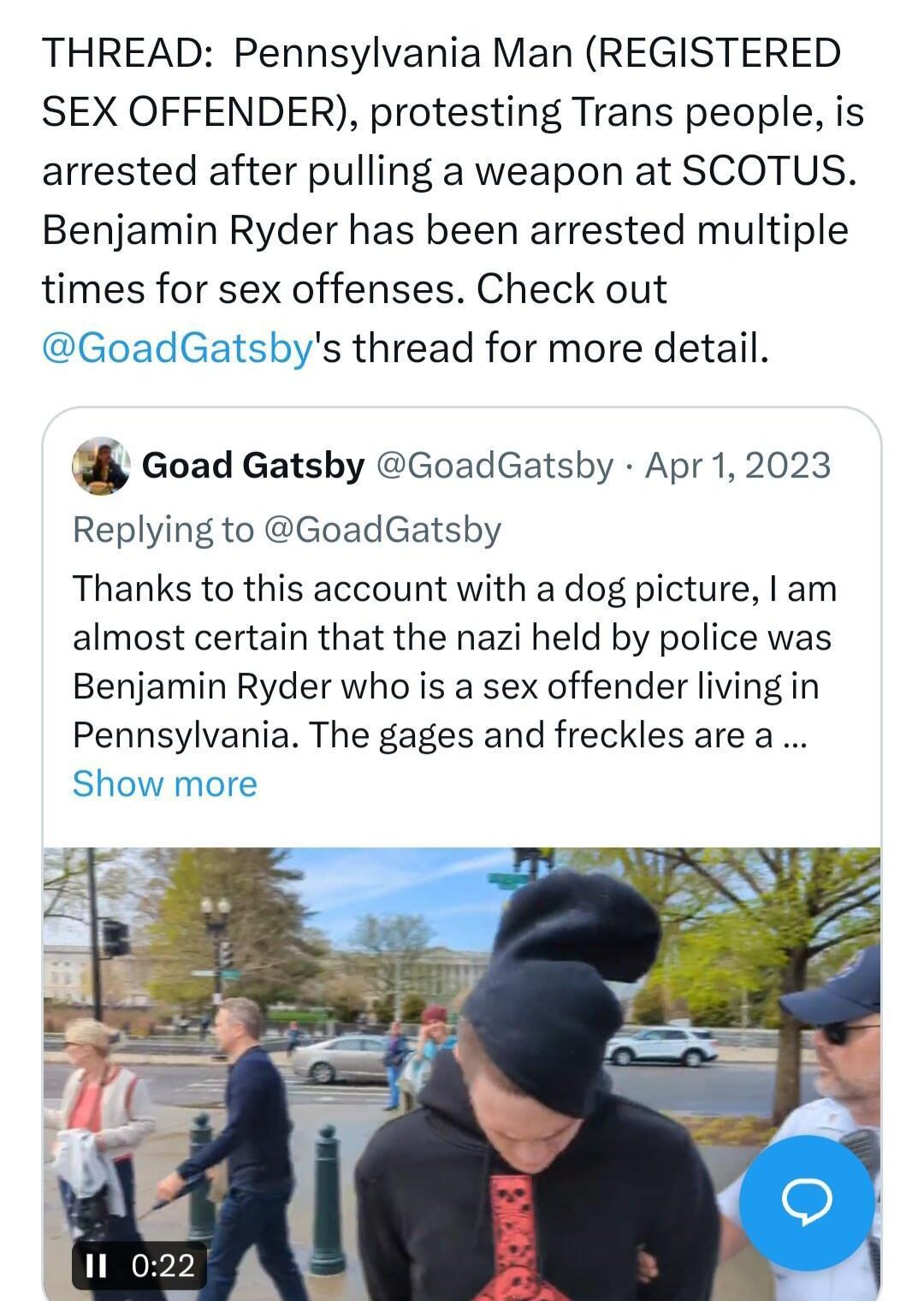
Ryder has been loosely associated with different nazi crews but his exact ties have been hard to pin down- until now. Antifascists have positively identified Ryder as a long-time member of S14, NJEHA, WLM PA/NJ, and Embrace Struggle Social Club (formerly a part of the Active Club network but the group has since disassociated).
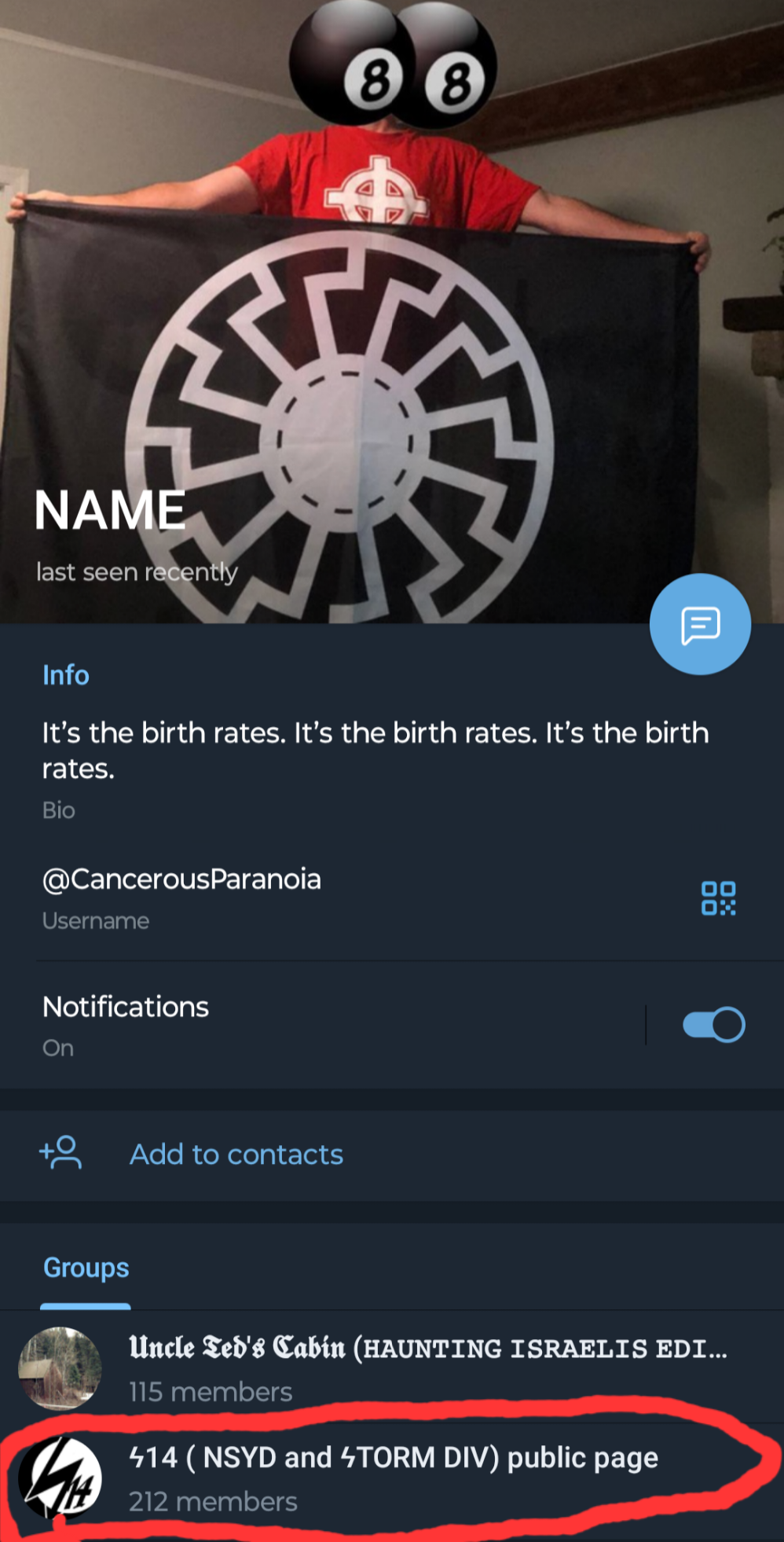
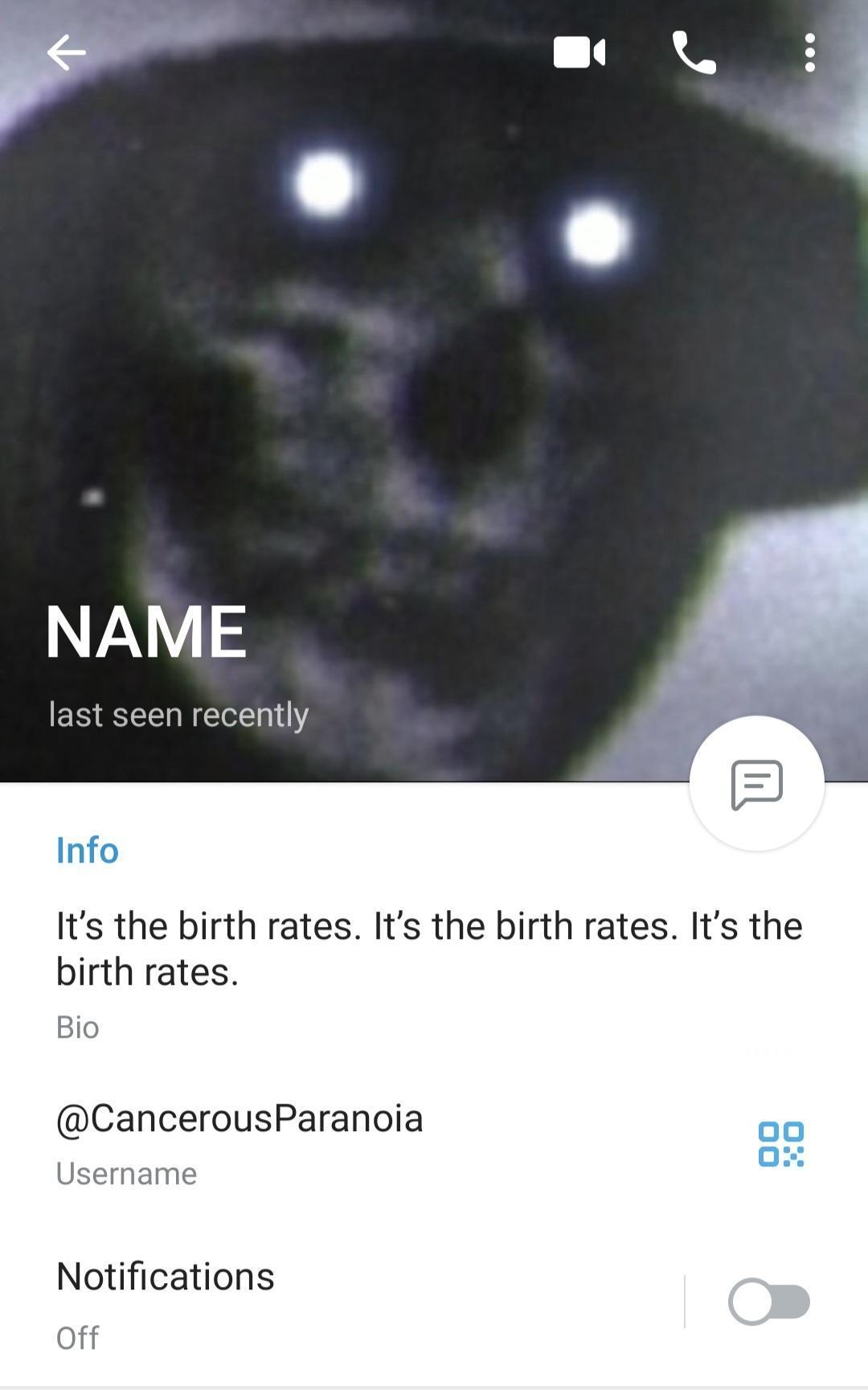
Ryder who uses the Telegram handle @cancerousparanoia and “NAME” as his display name, has been a member of S14, NJEHA, and WLM PA/NJ since 2022/2023 when he became increasingly active in-person and friends with fellow neo-nazi Mathew Bair. Ryder has attended many in-person actions including hangouts in PA with Kauffman, Bair, Cossack, and other general members.
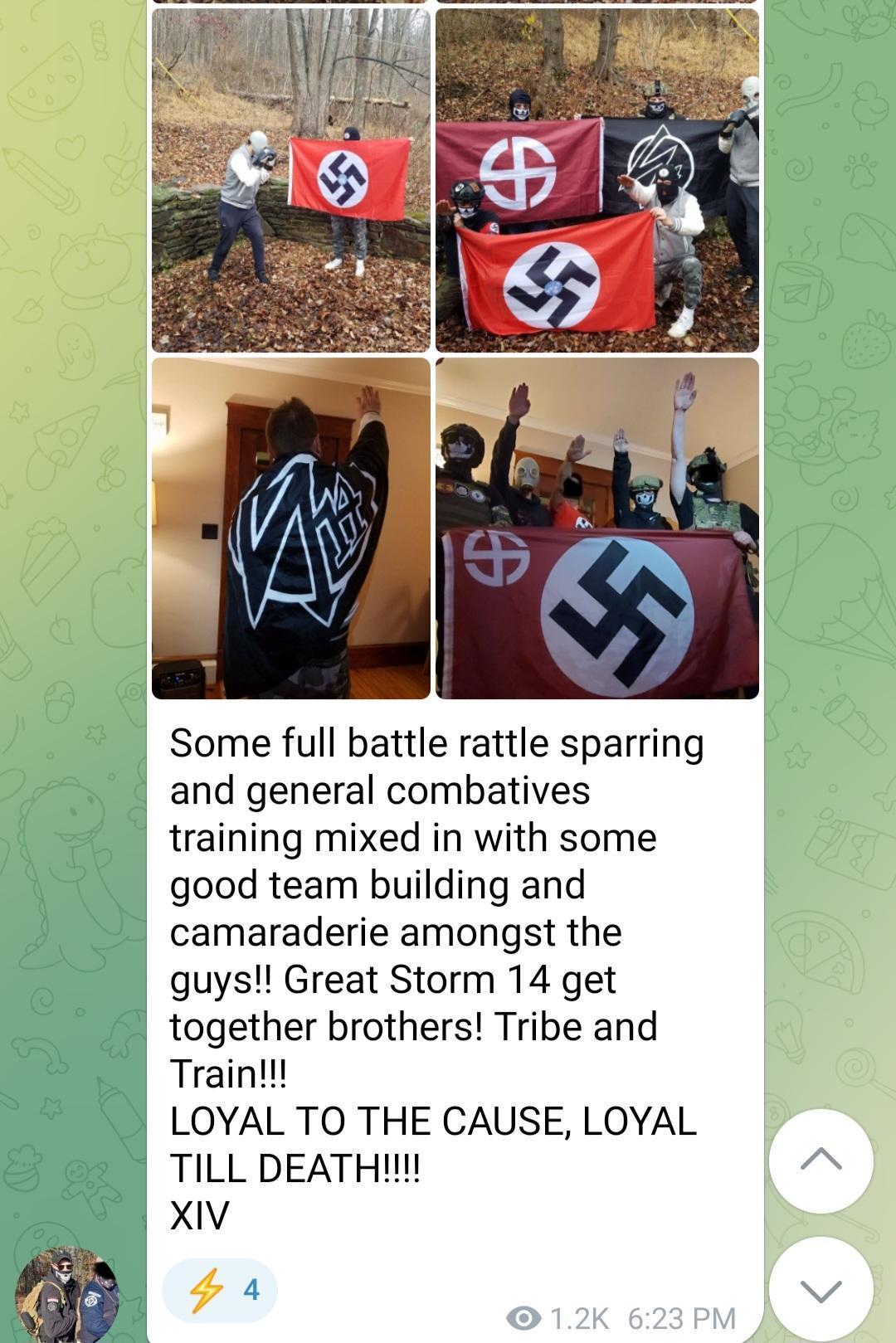

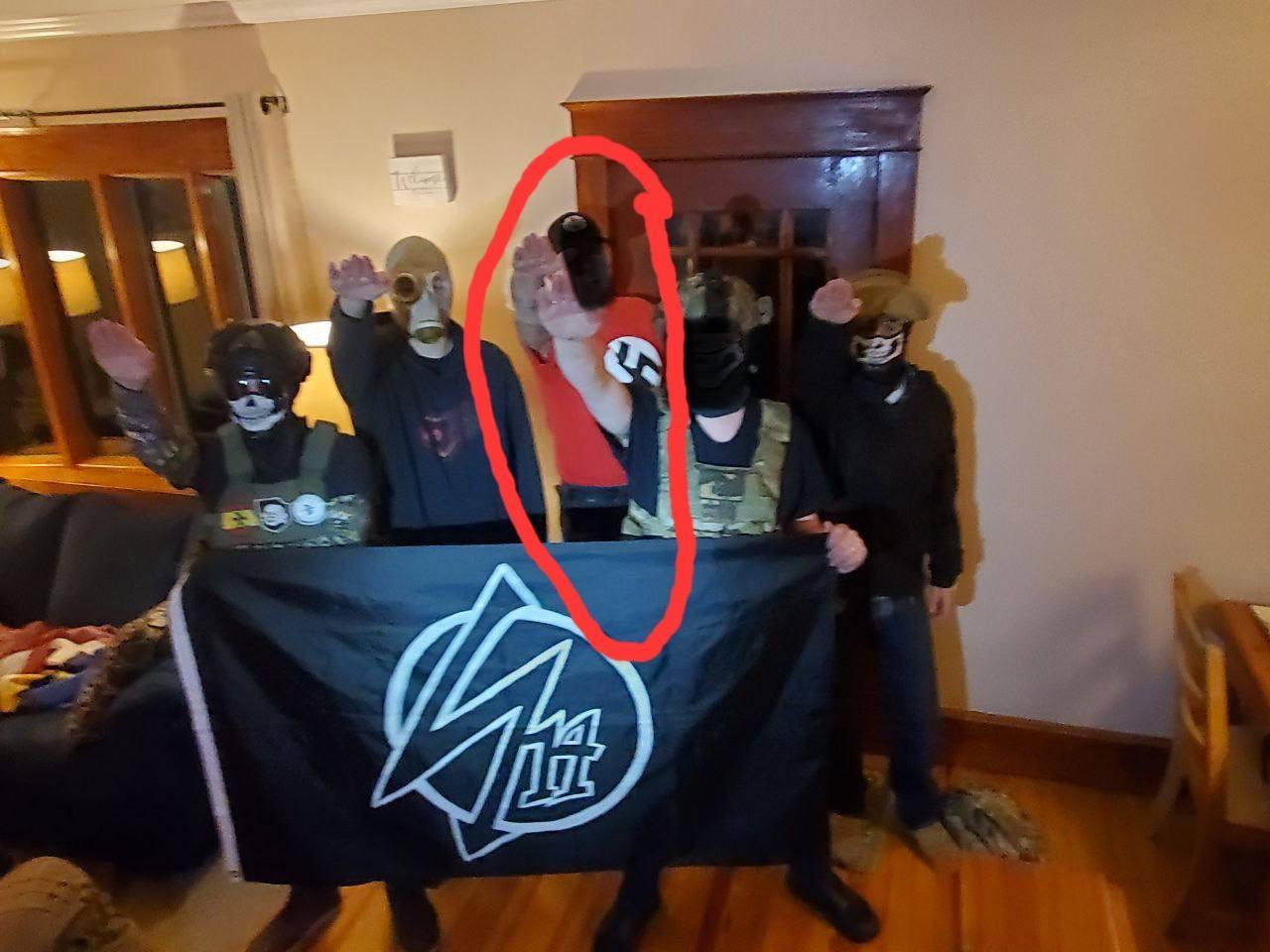
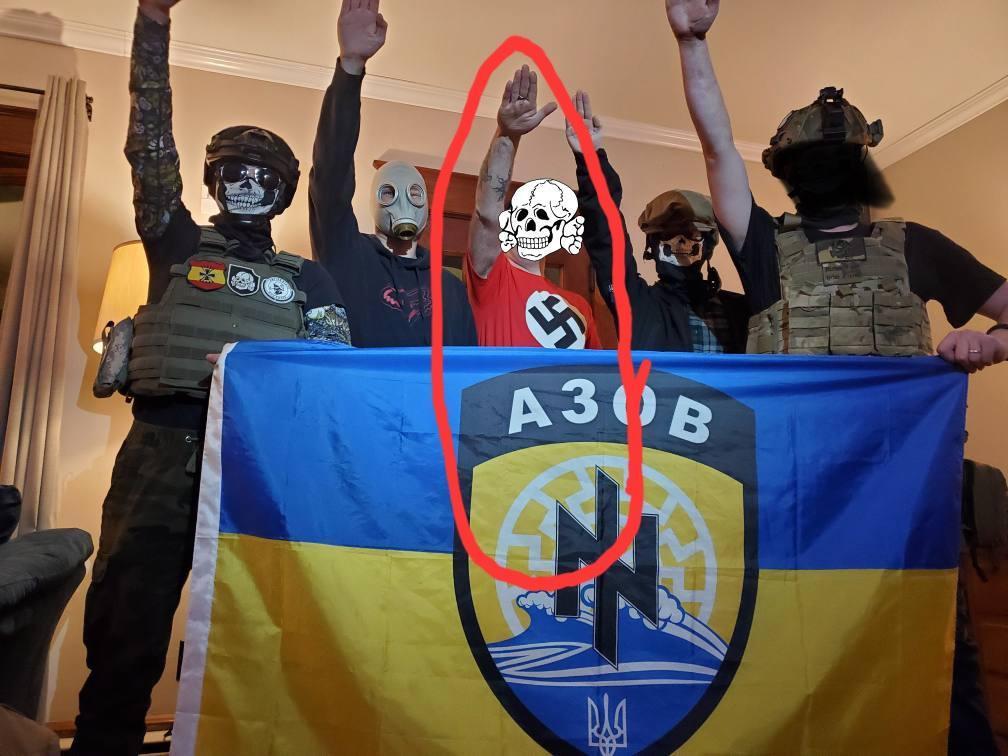
Below, Bair and Ryder can be seen joking around about their attendance and NJ Hate Watch’s coverage of this same hang out in 2023.
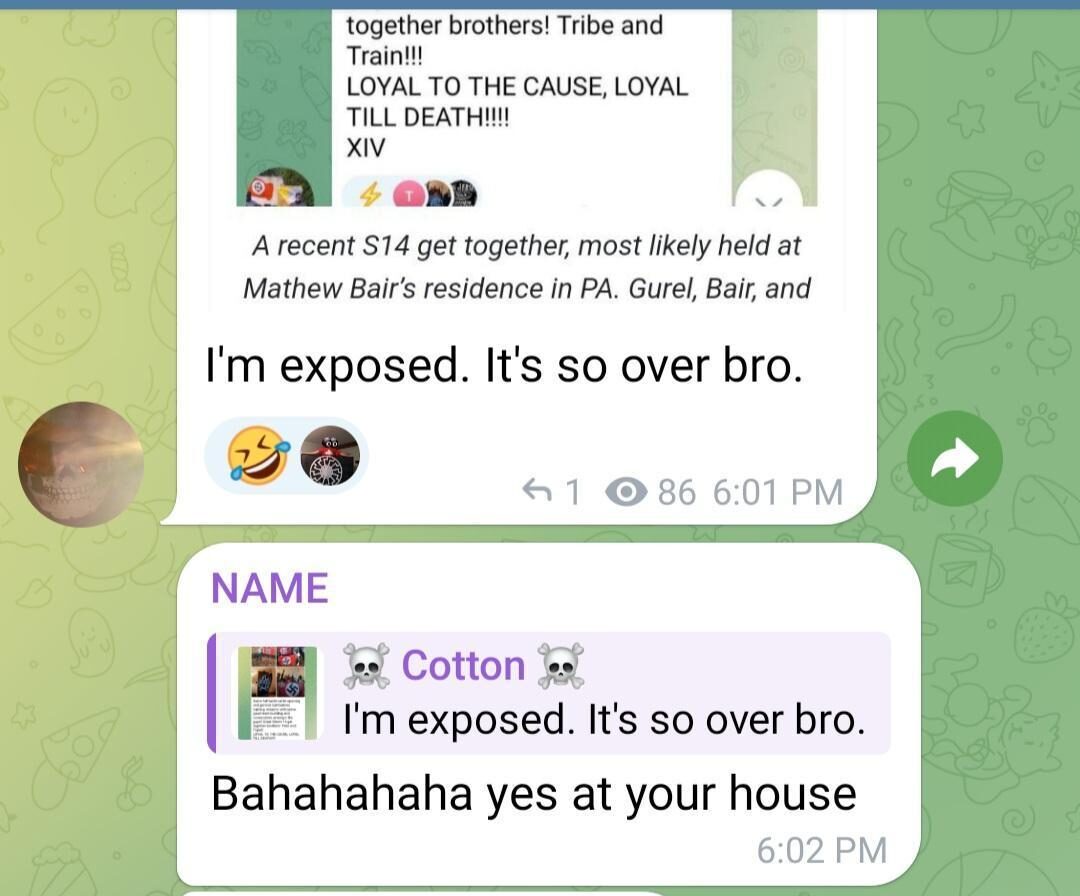
Ryder has also openly discussed his membership in the regional White Lives Matter crews, specifically mentioning their organizational structure and past collaborations. WLM PA/NJ has been in hot water with the state over the past year and a half. They have tried to distance themselves away from other WLM members like Evan Plumlee who was caught up in the J6 “insurrection” and helped invade the capitol building and Nicholas Mucci, who very recently plead guilty to a host of charges stemming from a WLM action in New Jersey.
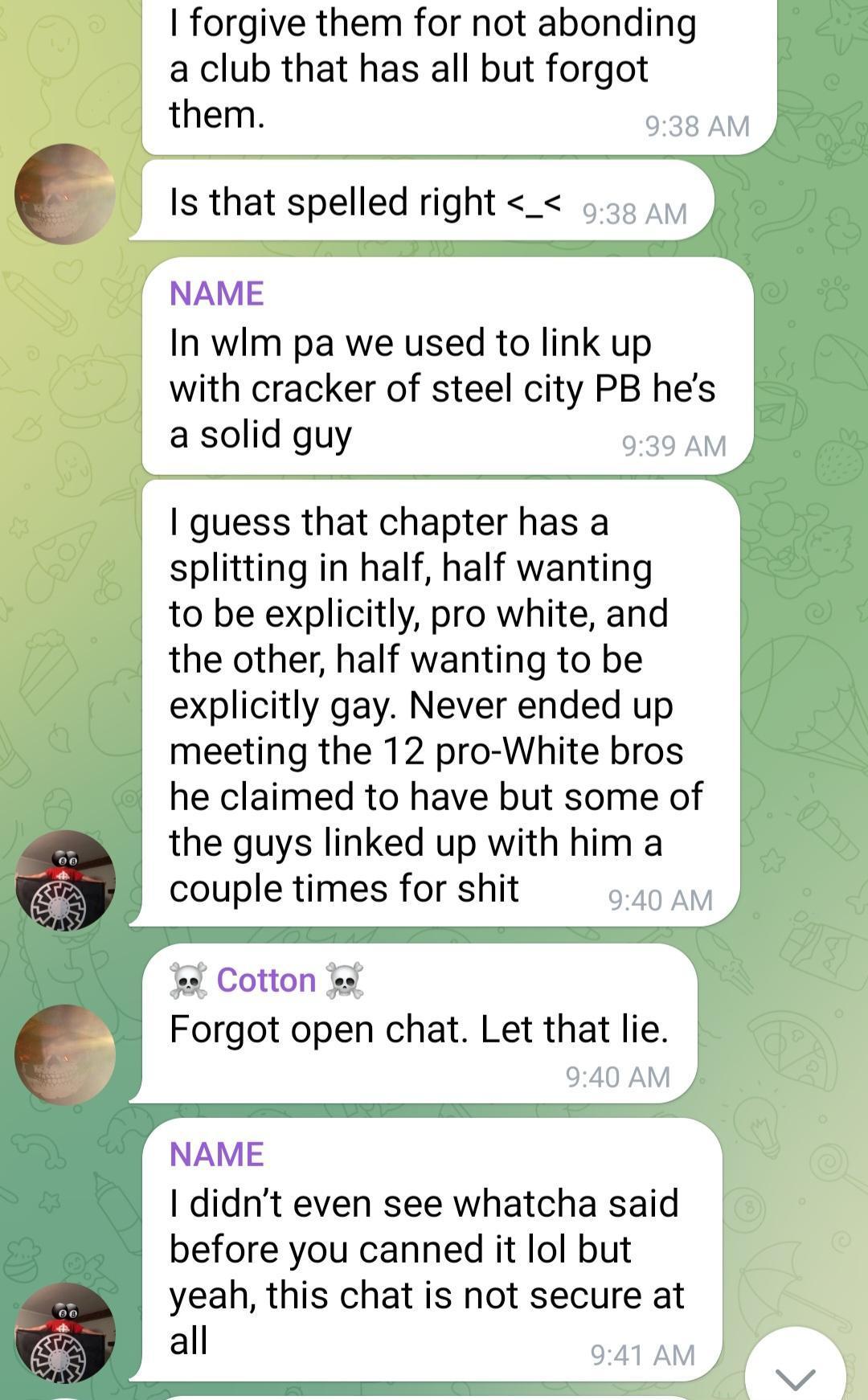
S14, and its leader Mark Kauffman, likes to posit the group and their collaborators such as Embrace Struggle and WLM, as moralistic and disciplined crews that are against pedophilia, respect white women, and are against all forms of “degeneracy”. In the past Kauffman has booted prior members for violating these terms, but the irony here is that Ryder’s long-term membership in the crew flies in the face of these supposed principles.
Ryder has had a very public and well documented case of being a compulsive sex offender who targets both women and children. Starting in 2015 when he was 20 years old, Ryder was arrested and convicted of indecent exposure and open lewdness when he stripped naked in a McDonald’s women’s bathroom and exposed himself and followed a woman using the restroom. After this incident he served jail time and was forced to register as a sex offender; he is currently listed as a Tier 1 sex offender in PA.

Later in 2017/2018 when he was 23, he was picked up in PA for multiple instances of exposing himself to women and girls in public. In one incident his victims were as young as 12 years old, something Ryder admitted in open court.
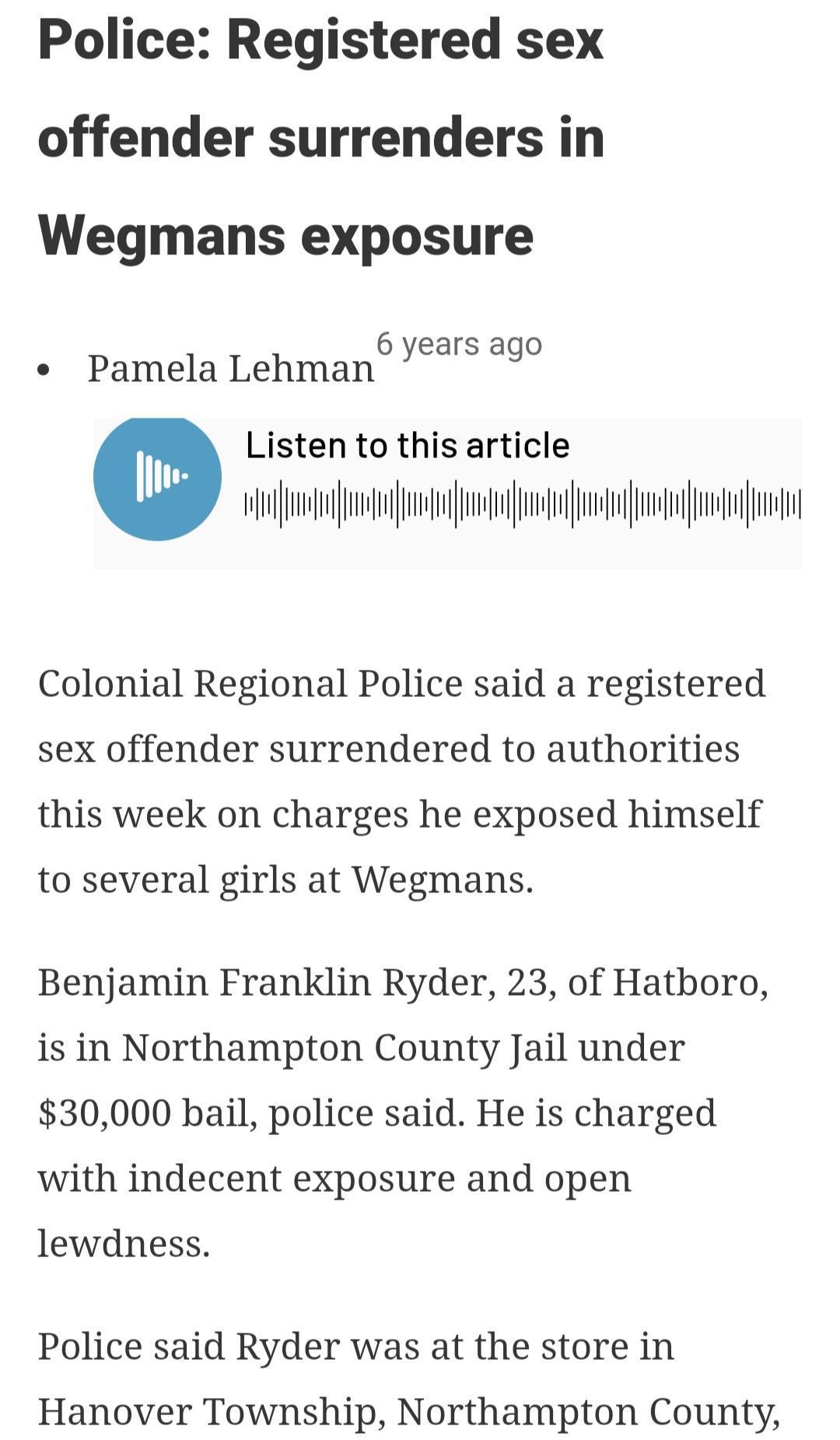
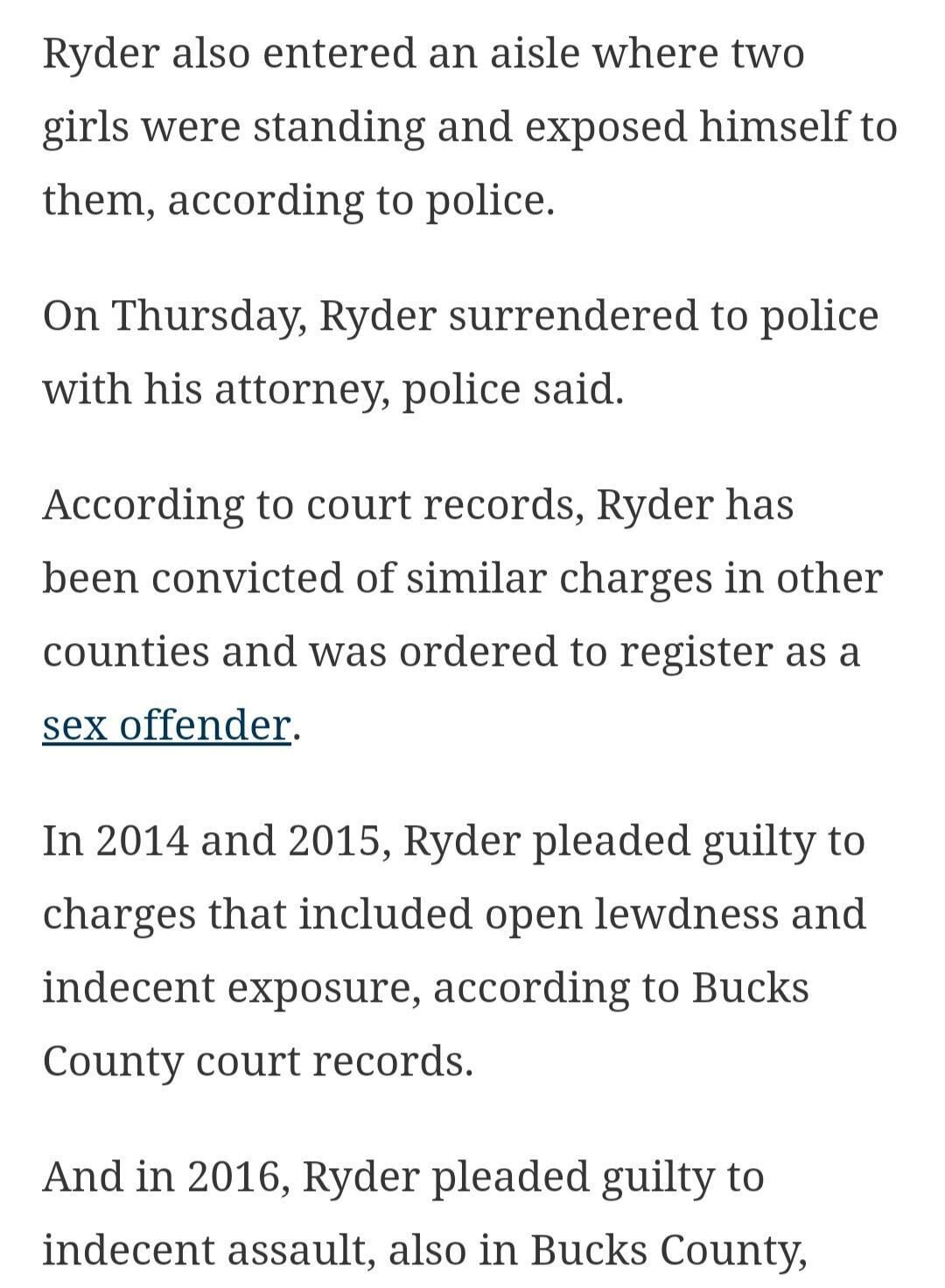
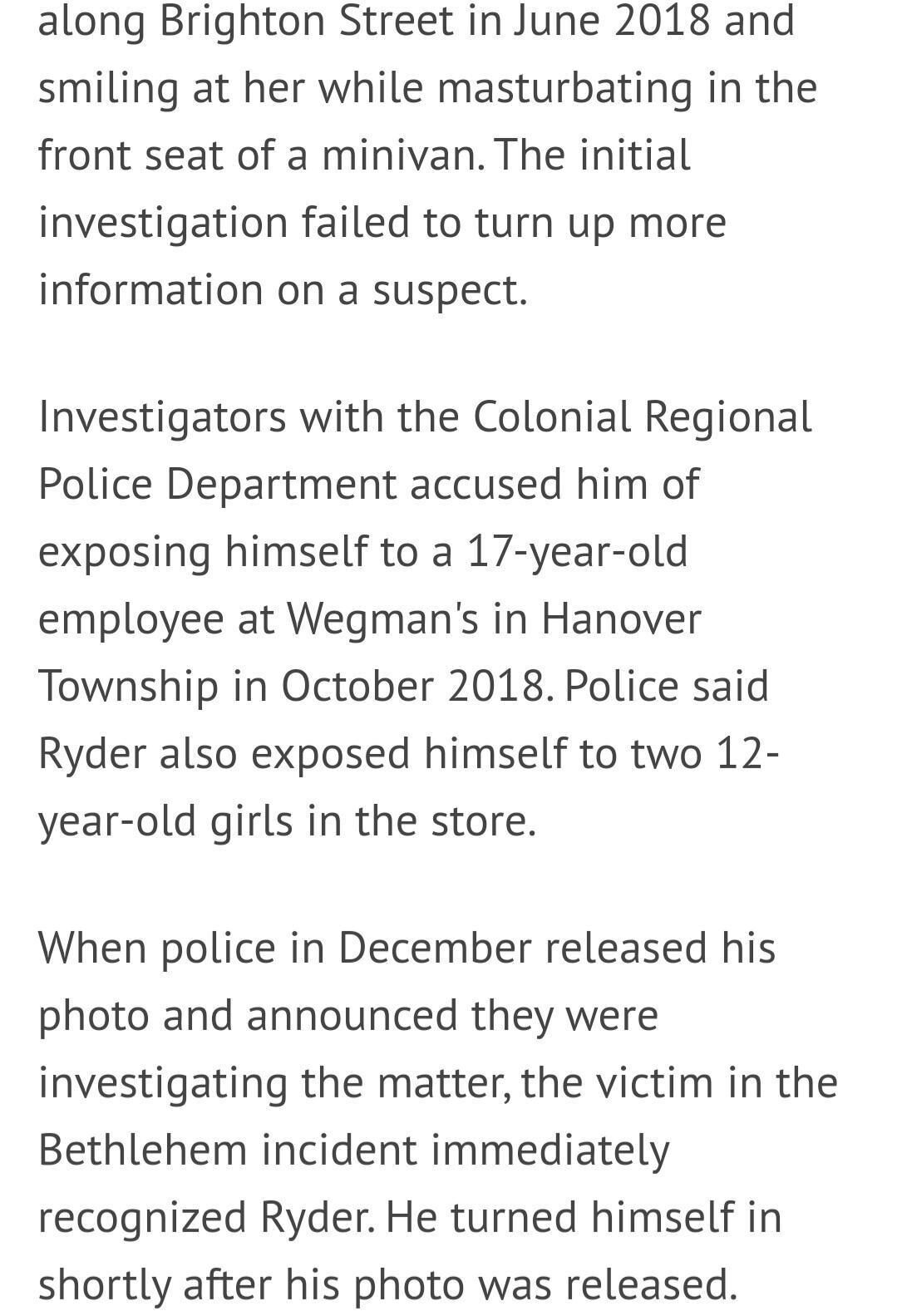
So why does Kauffman, S14, WLM, NJEHA, and Embrace Struggle associate with Ryder and allow him membership within their crews? Despite Kauffman’s bravado, he doesn’t actually stand by any of his supposed principles by hanging out with and befriending someone who sexually assaults little girls. Most likely Ryder doesn’t view himself as a pedophile, but what do you call someone who compulsively targets children as young as 12 years old and shows them their genitals? Ryder gains sexual satisfaction from exposing himself to women and children and there are no other labels that come to mind other than “sex offender” and “pedophile”.
For the public’s safety, especially women and girls, the following information is being released: Ryder, is a 29 year old white male who lives in Hatboro, PA on Lancaster Avenue. He is 6′ 3″, 185 lbs, has brown hair, brown eyes, several arm tattoos, and wears ear gauges. He owns and drives a black 2012 Jeep Grand Cherokee with a PA license plate “KDK5085”.
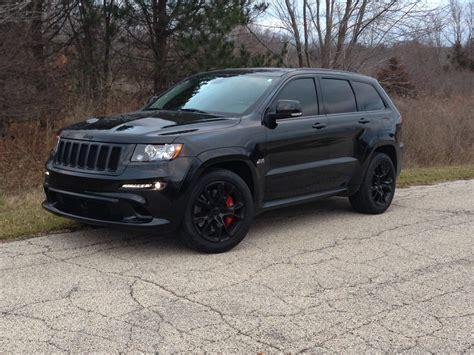
S14 members: With addition of Benjamin Ryder, seven of your people have officially been identified and doxxed including Jackson Bradley, Paul Minton, Daisy McGowan, Mathew Bair, Mark Kauffman, and Sara Sheaffer. If you continue to operate, more of your members will be exposed and the pressure will increase. You will be held accountable for the nazi pedophile supporting filth that you are.
Send tips and information: njhatewatch@protonmail.com
Submission
Today I walked around UPenn and obscured the screens of PPA parking meters and drew all over the bathroom walls of the Penn Bookstore.
Fuck them for not divesting from Israel.
Fuck them for shutting down the encampments.
Fuck all the Zionists at UPenn.
from Idavox

Mark Kauffman, right, along with his fiancé Sara Sheaffer.
It’s not a nice day for a white power wedding!
HONEY BROOK, PA – Saturday was supposed to be the day that prominent neo-Nazi Mark Kauffman was supposed to marry his fiancé and fellow neo-Nazi Sara Sheaffer. Instead, Sheaffer found herself still single this weekend and begging for bail money after Kauffman was picked up at the wedding venue the night before on an outstanding warrant in Massachusetts from six years ago.

According to court records from Chester County, PA, Kauffman is being held at the Chester County Prison in lieu of $75,000 bail. Records further indicate this was an “Arrest Prior to Requisition” which indicates the arrest of someone who has been charged with a crime in another state or jurisdiction. In February 2018, an arrest warrant was issued for Kauffman who law enforcement said was connected to a shotgun, rocket launcher and methamphetamines found in a Hadley, Massachusetts storage unit on Route 9 in Hadley, Monday. The Hadley Police Department say Kauffman is facing charges of trafficking in methamphetamine of 100-200 grams, possession of a large capacity feeding device and two counts of possession of a firearm without a license.
The location of the wedding location was an Air BnB that was publicly announced via a wedding website that indicated that the couple would be at the house on Friday after 6:00 PM and staying there until Sunday. A Telegram post on Sunday noted that Kauffman was arrested the eve of his wedding, with Sheaffer, who is five months pregnant, standing next to him. Her Venmo and CashApp accounts that are found on the wedding website are now being used to raise bail money.

According to Jersey Counter Info, Kauffman and Sheaffer, both from Massachusetts, are leaders of a neo-Nazi group based in the New York/New Jersey/Pennsylvania tri-state area called Storm 14 (S14). Kauffman founded the group in March 2023 after he split from another group called the National Socialist Youth Alliance (NSYA). As has been the case with neo-Nazi groups as of late, S14’s activities have been regulated to posting stickers on public property and participating in pop-up rallies that would be put on either by themselves or other groups. Kauffman was identified as one of the participants of a rally last week in Philadelphia, Pennsylvania on an overpass that also included neo-Nazi and registered sex offender Benjamin Ryder. On Telegram, Kauffman used the name “Joachim Peiper” after a Waffen-SS war criminal during World War II who was convicted of killing American POWs, and although was initially sentenced to hang had his sentenced commuted and released in 1956. The real Joachim Peiper remained a committed Nazi, privately associated with fellow Nazis and even gave interviews in France after the French Communist Party exposed his presence in the country. On Bastille Day 1976, his home was attacked and torched by antifascists calling themselves the Avengers. Peiper’s charred remains were found in the aftermath holding a pistol.
Were Kauffman to post bail before he was extradited to Massachusetts, he would have to return to the state of his own accord.
from Instagram

from Instagram


from Idavox
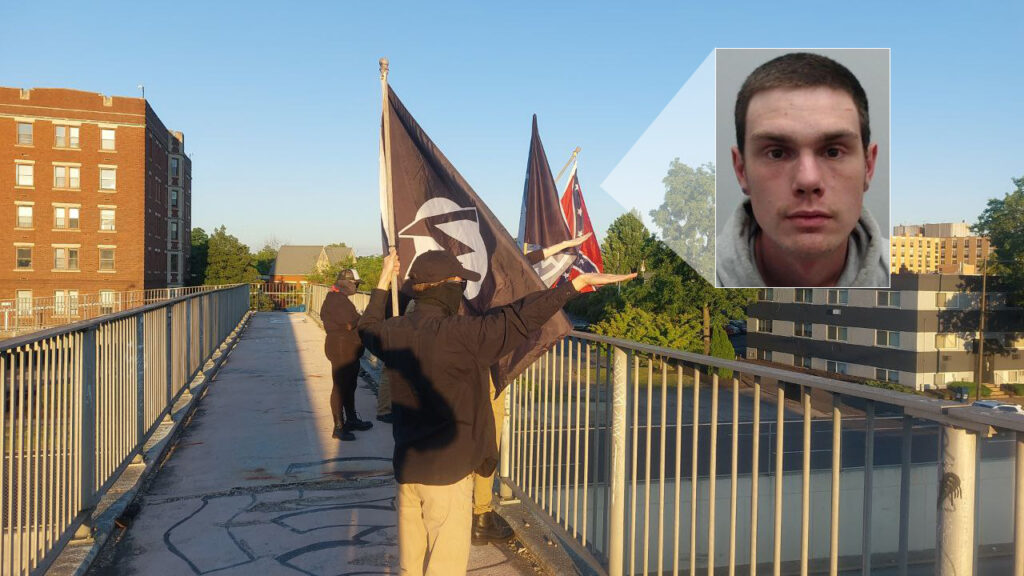
June 15, 2024: PA White Live Matter protesting on an overpass. Inset: Benjamin Franklin Ryder
It’s not merely bad optics. It’s who they truly are.
PHILADELPHIA, PA – A registered sex offender with a long criminal history as well as a history of neo-Nazi activism was among a handful of individuals that held a protest on an overpass going over Roosevelt Blvd. in support of a White child allegedly murdered by a Black woman in Ohio.
Benjamin Franklin Ryder – his real name – accompanied at least eight associates of the Pennsylvania chapter of White Lives Matter (WLM) and was holding a Confederate flag while the others held White Supremacist flags, including a flag for a small organization called Storm 14 (S14) and gave Nazi salutes as cars drove underneath. Eventually a crowd began to build at the base of the overpass and police tailed the small group as they went back to their vehicles.
Ryder has been one of the more active neo-Nazis in the Philadelphia area, participating not just in WLM but local so-called “active clubs,” which are street gangs that exist solely to physically fight political opponents, particularly antifascists. Embrace Struggle, which posted the photos and video or their protest on their Telegram account which is run by Ryder, has been associated with Pennsylvania Active Club, even promoting their videos on the Embrace Struggle account. The Pennsylvania Active Club is comprised of onetime members of Keystone United, formerly Keystone State “Skinheads” in the local Philadelphia area, including Joe Phy of Levittown, PA, Anthony James Olsen and Nunzio Pellegrino, whose brother, fellow KSS member Vincent, died while fleeing the scene as a woman accused him of sexually assaulting her, hitting a concrete wall while driving away at a high speed.
Ryder’s activity however has been regulated to publicity stunts such as rallies and protests as well as targeting establishments he considers to be leftist and post stickers promoting Nazism or WLM. Last year, he was one of two neo-Nazi antagonists who tried to start a fight with participants of a protest outside the Supreme Court in Washington, DC, Ryder getting placed in custody for allegedly pulling out a knife.
This was far from Ryder’s first issue with law enforcement. In 2015 Ryder was sentenced to 4-12 months for approaching several women completely nude in a McDonalds parking lot. In June 2018 he exposed himself to a woman in Bethlehem, PA as he sat in his car masturbating. When law enforcement caught up with him in December of that year he was already in jail after he exposed himself to a 17-year old employee in October at a Wegman’s supermarket in Hanover Township, PA and for another incident two months after that incident at the same store where he exposed himself to two 12-year-old girls. He was eventually sentenced to 1-2 years in prison and he is currently on the sex offender registry for an charge of indecent assault that he was arrested for in Warwick Twp., PA in November 2018.
Yesterday’s outing was reportedly part of a day of protests for some White Supremacist groups across the country.
By Greater Chicago WSA
Reprinted from WSA Discussion Bulletin # 75
1
Wednesday, May first, at 8 30 pm EDT, workers from around the country and Canada gathered for our third annual May Day online event.
The recent passing of our beloved Clarissa, who was pivotal in the first two years of our evening May Day, was frequently mentioned through the gathering.
The opening song, by Martin Traphagen, ‘Arrival,’ was inspired by Clarissa.
The third annual May Day Speech, this year delivered by Rebecca Croog, vividly described the impact that Clarissa had on her work: “As I find my way into this work, I am visited multiple times a day by the memory and spirit of our Comrade Clarissa, who we recently lost to long covid. I can hear her encouraging us:
‘Don’t mourn, organize!’ I can feel her galvanizing us: ‘Let’s build coalitions! Let’s make this moment bigger and bigger!’ Gathered together as an anarcha-syndicalist community, let’s invite her in to remind us: ‘ALL BUILDS TO THE GENERAL STRIKE’
Rest in power, Clarissa! Free Palestine!”
As attendance increased, speakers reported on recent health care labor struggles, and one of the founding members of WSA, Steve Rabinowitz, read from the history of the Haymarket Martyrs, specifically the words of August Spies.
After the formal program, attendees shared news of May Day events and Gaza actions in their areas, from Philadelphia, Asheville, Greater Chicago WSA and other cities.
Comrade Greg McGee shared breaking news of attacks on the Ceasefire Gaza encampment at Columbia University.
Rebecca shared news of her work with Jewish Voice for Peace, recent union drives, and workers standing up for Gaza.
At one point everyone joined in singing happy birthday to our comrade Alexandra, who is a May Day baby!!
2
As the meeting wound further down, comrades stayed for more informal discussion. Comrade Mitchell, (WSA zone 2 delegate in Oregon), asked what anarchist-syndicalists make of Rosa Luxembourg. This led to an energetic discussion on how anarchists can build relationships with anti-authoritarian Marxists, such as council communists and anti-state Marxists, outlining how Luxembourg’s work prefigured councilism, lamenting how Trotskyist groups have claimed her. Like later councilists, her criticism of anarchists seemed to be more that, at that moment, they were disorganized and had little capacity, different from criticism of organized libertarian communism itself.
By this point there were a few brave and sleepy comrades engaging in this conversion, and there were warm goodbyes. And for annual attendees not part of WSA, there were hopes to see everyone on May Day 2025!
Below is Martin’s opening song ‘Arrival’, in honor of Clarissa –
Submssion
from I Mix What I Like
(It was announced today that Russell “Maroon” Shoatz has joined The Realm of the Ancestors. This Q+A interview was conducted in 2006 by Comrade Sobukwe and Marcus Schell, both supporters of the Russell “Maroon” Shoatz Defense Committee. Marcus Schell is the son of the late Reggie Schell, a founding member of Philadelphia’s Black Panther Party. The interview is part of the 2013 book Maroon The Implacable: The Collected Writings of Russell Maroon Shoatz, edited by Fred Ho and Quincy Saul and published by Oakland’s PM Press. Light editing was done on this excerpt.)
*****
How did you get involved with the Black Movement of the 1960s and 1970s?
As a Black male who was born in Philadelphia in 1943, I can honestly say that until the age of twenty I was “dumb-as-do-do” so far as political and broad social issues go. Moreover, my father was a long-distance truck driver and he made very good money. So outside of eating some surplus cheese here and there, my family and my working/middle-class neighborhood was not a place of economic hardship. Thus, there was no incentive there.
In fact, my parents, and the adults in this neighborhood in general, were all on the go-to-school, go-to-church, and be-home-at-a-respectable-time kick. Social and political issues were never discussed or hinted at in the homes, churches, and schools!
All these Negroes (that’s what we were all then known as) were busy trying to get ahead as best a Negro could, even though in Philly just about everything was dominated and controlled by whites: city hall, police stations, firehouses, all the schools, neighborhoods, downtown businesses, and transportation. A Negro couldn’t even become a Boy or Girl Scout!
So, although there was no out-front segregation, like in the South, Philly’s Blacks were segregated in neighborhoods and allowed to leave only in order to work, shop, pay bills, and travel—sort of like apartheid South Africa.
Until I was twenty, that was my life, with the addiction of being deeply involved in gang activities.
Although by 1960 I could see some of the southern Civil Rights Movement struggle being played out on TV, I couldn’t relate to the nonviolence that they practiced. Everybody I knew believed in an eye for an eye and a tooth for tooth—except when it came to the police. We were uniformly scared of them.
Consequently, I can put my finger on the exact instant, the exact circumstance that began my awakening and journey into political life: going to a rally in Harlem, New York, and listening to Malcolm X speak.
In 1963, I was twenty and had moved to Harlem to live with an aunt, to get away from my Philly gang and find a job. I was also running from an arrest warrant for a rape, which is a whole another story. Anyway, my aunt warned me not to go around to 116th and Lenox Avenue (now Malcolm X Boulevard) because “the nationalists are having a rally, and there might be some trouble.” Now I had no idea what a nationalist was, but trouble was my thing. I was still steeped in the gang culture’s way of viewing things.
Malcolm, flanked by Nation of Islam security, talked on an outdoor stage for hours. The streets were shut off and throngs of people were on the sidewalk, in the street, in the adjoining park and hanging out of buildings and high-rise projects—all alternately evenly engrossed in his words, then shouting, clapping and screaming at the top of their voices!
But not me. I was, instead, oscillating between being mesmerized by his A-to-Z explanation of things, and a nagging fear. I was like Neo in The Matrix when Morpheus told him he had been living in a dream world. My whole world was being blown away and reshaped as I listened. What put the icing on the cake was the actions of the police, who were dispersed throughout the crowd. They were smoking and joking like they were not listening to Malcolm take apart everything they and the entire American system commonly indulged in!
And although I couldn’t understand everything, I still knew he was challenging them to either come up there and prove him wrong or come up there and shut him up. Never had I seen anyone handle the police like that.
And although nobody could tell me that I wasn’t a tough guy, that was some deliciously scary shit that won me over to begin following politics and important social issues.
But like Neo, I wasn’t ready just then to become actively involved. In fact, it wasn’t until after a squashing of the rape allegations, a return to Philly, a failed marriage that produced four offspring, and a horrible stint as a drug-dealing hustler that I finally ran out of places to hide. In order for me to begin living like a full human being, I had to cast all fear to the wind and start following Malcolm’s example.
What was the Black Unity Council and why did you help found it?
The years 1967-1968 found me completely fed up with being a modern-day slave—a conclusion I had come to since Malcolm had begun my awakening. It was doubly maddening became damn near all my friends, family, and neighbors seemed content to go along with the bullshit that by then was being exposed and attacked in Black communities, on college campuses, and elsewhere, from one side of the globe to the other. They were still trapped in the Matrix.
A former gang buddy named Points, however, had reached the same conclusions that I had, so we decided to put out the word that we were gonna have an open meeting and form an organization to address some of our concerns. Of course, by that time there were other organizations in Philly that we felt good about, but none of them were in our immediate neighborhood.
So one weekend we held the meeting at the house of another gang buddy named Brick and, surprisingly, about fifteen to twenty people showed up, male and female—including my blood sister Gloria, who I had no idea shared my concerns and ideas. Indeed, we all were experiencing feelings of frustration and isolation.
So right there the name Black Unity Council was chosen and the group was formed, although no officers were selected, nor would the BUC ever choose any officers. We always worked by consensus—at least up until we got deeply involved with paramilitary activity about two years later.
In fact, outside of current events and local concerns, the BUC never discussed political theories, ideologies, or much about Black history. Most of us were nevertheless very impressed with the Black cultural nationalists. We admired their knowledge of Black/African history and their choice to dress in African garb—especially how beautiful and graceful it made women look.
We especially liked their emphasis on armed self-defense! At that time the Revolutionary Action Movement, known as RAM, was very active in Philly. Their cultural workers and semi-clandestine paramilitary arm called the Black Guard had a center close to our neighborhood, and we would always hang out there. They had regular seminars, history/cultural classes, karate classes (for women and men with some very sharp sisters along the Crouching Tiger, Hidden Dragon vibe!) In addition, they had a “liberation school” that the BUC planned to emulate.
At the time, the BUC had about thirty regulars—mainly in southwest Philly and Germantown. We were able to assemble enough people to fill a gym or large church and also in each other’s homes. Eventually, we rented a large house and furnished it with the necessities for our own liberation school. We charged each person a can of food to attend our affairs, which we would give to needy families.
Since a number of us had gang backgrounds we also became involved in citywide efforts to get gangs to sign a truce.
Yet all of that was brand new to everyone in the BUC. We didn’t have any experienced political/social workers to work with us on a regular basis. As a consequence, I know now that our emulation of RAM’s emphasis on armed self-defense—not balanced with other considerations—caused many in the BUC to push it to become a strictly paramilitary group. On the other hand, the extremely brutal and terrorist Philly police, coupled with our newfound consciousness that freed us from our fear of them, also played a major role!
We had listened to Malcolm chide Blacks for being ready, willing, and able to kill each other, and, while in the U.S. Army, kill hundreds of millions of Chinese, but being essentially cold cowards when it came to defending themselves right here at home. And RAM hammered that same message home by preaching that Blacks had to stop believing that the police were bulletproof!
Regrettably, although many in the BUC were no longer afraid of the police, most of the community members that they sought to serve still were—sort of like Morpheus telling Neo that he must remember that those they were trying to free from the Matrix were not ready for that. On the other hand, the police no doubt couldn’t imagine that we had lost our fear of them!
Anyway, within two years the BUC had turned into a paramilitary group containing about fifteen and male and female members, fully armed with shoulder-fired weapons, sidearms and even hand grenades. We belonged to shooting/hunting clubs, practiced karate, went on outdoor maneuvers, and fortified all of our homes. In fact, think about today’s survivalists and you’ll see where the BUC was at: food, water, first-aid stocks, and all.
Undoubtedly, today’s readers may also have a hard time understanding the BUC’s zeal unless they view a documentary like the acclaimed Eyes on the Prize. Only then will they get a proper feel for the type of social, political, and psychological ferment that surrounded the BUC.
Thus, when the paramilitary BUC first learned about the Black Panther Party we had already been established for close to two years. Indeed, we liked what we were learning but, on the other hand, we grieved for their comrades being killed off in the streets and in their offices like sitting ducks. So we decided to contact them in order to see if we could assist them in their work and staying alive!
Hold up! I need to backtrack for a minute in order to elaborate on the BUC’s decision to become a paramilitary-style group. Otherwise, the reader may be left with the impression that the BUC was some kind of nutball formation.
The fact of the matter is that in 1968, Philly had similar Black paramilitary-style formations all around the city. Essentially, all of them were motivated by a heightened consciousness, a need to make more sophisticated their neighborhood’s defenses against adjoining white neighborhoods, which had always displayed aggression but were now more fearful due to the rising Black pride on display. We also wanted to prepare for the inevitable showdown with either the police or the National Guard in the event of another rebellion (a so-called “riot”), as had happened in North Philly in 1964, the first of the nation’s “long, hot summers.”
Certainly, most of these groups could easily be identified by their military-style clothing, which, unlike today, signaled to everyone that the wearers were paramilitary elements of the Movement. In that regard, RAM was the largest and best-known local practitioner of this approach. Around that time, moreover, RAM had a very large youth group, militant Black males and females known as the Liberators. They always wore black berets, jackets, pants and combat boots. This is before most people in Philly knew that the West Coast-based BPP also dressed in the same way. And the police didn’t wear black back then!
The BUC was in negotiations with the Liberators’ leadership about merging forces, with the more mature BUC members being asked to serve as officers for the younger Liberators.
Obviously, the police were always aware of this paramilitary-style activity, especially due to RAM’s open agitation and spray-painting of “Join the Black Guard” all over the city. Another formation threw hand grenades into a police parking lot, damaging patrol cars and provoking heavily-armed police to raid Black neighborhoods all over the city.
By the time the BUC decided to contact the local Black Panther Party, many of RAM’s leaders and many of the other paramilitary formation leaders had been jailed, forced underground, or decided to become less militant. As Malcolm said, a lot of people were not clear on what they were doing. He told us that once they found out, they would get back in the alley and change their names.
Anyway, in mid-1969, the BUC contacted the local Panthers, who were headquartered in North Philly. Although by then we had learned a lot about the national organization, our talks left us disappointed. In a nutshell, it was apparent to us that the BUC cadre was much more advanced than the local Panthers—militarily, anyway. Since we were the strongest of the two in this regard, we felt that we could negotiate a relationship the same way we had done with RAM. It was possible since the BUC was governed by consensus.
We found out, however, that the local Panthers couldn’t do that, since the Black Panther Party was a tightly-controlled, top-down organization. Our disappointment arose from the fact that they were getting killed all over the country and their leaders couldn’t come up with a strategy to combat that. In addition, the Panthers were being too rigid to allow local leaders the flexibility needed to create such a strategy. So the talks broke off, more or less, because the BUC never gave up supporting the local Panthers, and around that time some things occurred that cannot be revealed here because that would endanger the freedom of others. If this was not the case, I could give up some raw, hardcore rap that is usually hidden from this generation. Like Malcolm used to say, “Those who know don’t tell; those who tell don’t know.” As a result, a lot of cockeyed urban legends have sprouted up and become accepted as historical fact. I will attempt to set the record straight as much as possible.
First off, people must understand that in dealing with the history of the Black Panther Party, nobody knows it all—not the Panthers, not the police or FBI or other repressive arms of the state! This is because a whole lot of activities happened on a need-to-know basis. In other words, a lot of stuff was so delicate that it was known and handled both by who needed to know about it, with the downside to that being that you were on your own if things didn’t go right or if you got caught. That’s how it worked in the real world. Cadre who went on those types of missions accepted that upfront.
So why did the BUC merge with the Black Panther Party?
In December of 1969, the Chicago police led a deadly raid that resulted in the death of Panthers Fred Hampton and Mark Clark and the wounding of others. When members of the BUC heard this on the news, we were furious, sad and disgusted all at the same time. Certainly, our fury was directed toward the killers and our sadness for the dead, wounded, and terrorized Panthers. Our disgust was reserved for the Panther leadership that persisted in an unimaginative strategy that was getting some of the best and most sincere youth in urban areas killed and jailed. We were not experts, but even we had reached the conclusion that Panthers shooting it out with more heavily armed police from fixed positions was downright ludicrous! Even if they survived, it still left them in jail or hospitalized, causing everybody else to have to drop important work to bail them out and raise money for their legal defenses.
Consequently, after some discussion, we essentially decided to again get in touch with the local Panthers. But this time we planned to stick to them closely, no matter what. We just wanted to be around when their turn to get “vamped on” (raided by police) came. Of course, they had already been subjected to home raids, but nothing deadly. We planned to be in a position to upgrade their defenses and react to the expected attacks.
Rightly or wrongly, the BUC had reached the conclusion that in order for Blacks in the United States to be truly free, we would have to wage armed struggle. We believed that our oppression had many facets—social, political, economic, cultural and psychological. We did not have a handle on the intricacies surrounding these aspects, but we did know that in general Blacks did not have any substantial political power. Economically we were last-hired-and-first-fired and culturally we had been stripped of everything that would anchor us to our African past. We knew that it was up to us to prove we were as much man and woman as anyone else!
Can you describe your experience working within the Black Movement’s underground?
In a nutshell, it taught me the absolute necessity of all armed actions having broad, deep, multidimensional support. Otherwise they are open to isolation and destruction, which was the fate of the Black Panther Party.
This has nothing to do with whether armed actions fall into the so-called “terrorism” territory. That accusation is based on purely self-serving and hypocritical grounds. The need for multidimensional support has to do with the simple fact that we must have the resources, energy, creativity, and enthusiasm of the people on the side of the armed struggle. Otherwise, armed movement forces have very little chance of winning against the oppressive forces that do have broad and deep support.
Putting together this support must be very well thought-out. In a multi-racial, multi-cultural, sexist and class-ridden country and world this is a tough task!
That said, I think that we do not learn enough from the successes of the past. We have a goldmine of tried and tested successful approaches if we study how our ancestors used the Underground Railroad. It’s well-known that the Railroad is a shining example of a broad and deep multi-dimensional movement that set the stage for the destruction of slavery. Check out “The Real Resistance to Slavery in North America,” my essay in this book.
Quite frankly, I’m fed up with so much narrow-minded, paranoid crap masquerading as ideology being dished out by a lot of cowardly veteran activists who don’t want to step out of their comfort zones. They are misleading young people who are hungry for direction. Building conscious support is the absolute first step toward militantly challenging our oppressor. These old cowards know that! Nothing is more important than putting in work to stop this global, genocidal oppression!
How did the split in the Black Panther Party affect the local organization?
In my opinion, the “split” in the BPP is of secondary importance. We must instead look deeper into the BPP, the Movement in general, and toward those forces opposing us for a better understanding of what occurred and what should have been done.
Certainly, many splits in organizations during every historical period are more common than not. Splits serve good ends just as often as bad. The 1971 split in the BPP helped destroy it as a revolutionary organization.
From the ashes of the split, the Huey Newton-led West Coast faction showed its true intentions: to gut as much of the old BPP as possible and guide the remainder along clearly reformist and less threatening lines in exchange for some breathing room from the government repression and the campaign of terror that COINTELPRO was leveling against the party.
Perhaps this was a necessary “strategic retreat.”
On the other hand, the East Coast faction never got on his feet, essentially due to the sheer lack of experience of its youthful cadre in attempting to do the following:
True, they did begin publishing their own paper called Right On! But nobody ever heard of it, and it was shortly plagued with all types of problems hindering its organizing utility.
Their role in fielding the armed wing, however, served as a double-edged sword. On the one hand, the escalating terror leveled against the entire BPP hit the East Coast faction hard. Another batch of bogus arrests was planned to decimate their ranks, like the earlier New York 21 case, when twenty-one BPP members were jailed, tortured for two years, and finally found not guilty by a jury. But this time the arrests would be connected to a COINTELPRO-provoked “shooting split” in the BPP.
On the other hand, instead of chancing arrests and trials in this (by then) well-known conspiracy-to-commit-a-grocery-list-of-crimes dance, many BPP cadre decided to take the courageous decision of joining the fledgling armed wing that came to be called the Black Liberation Army. Although the BPP started off in an armed self-defense mode, by 1971 it had essentially gotten rid of that tactic, on Newton’s orders, except in a ceremony mode such as funerals.
Thus, the BPP who became the BLA chose to continue down the revolutionary path as fully armed members of the Movement. It was a positive decision under the circumstances. The separate armed wing would take away the government’s ability to justify its ongoing oppression of those BPP members who didn’t go underground with the BLA. And the BLA could still use armed members to help protect the Movement and the community from rampant police terror and murders, as well as provide the oppressed with a sense of hope that one day they might build up a counterweight to the armed might that they had always been crushed by—an evolution of the BPP’s mission.
Still, so many BPP members going underground, coupled with the ongoing repression and all-around lack of experience in handling such a complex maneuver, all but brought the expansion of the political base to a halt. This was because most of the veteran organizers were either in the BLA or providing it with support.
Finally, the handful of East Coast BPP members not fully occupied with the above were easily intimidated and subsequently demoralized by the repression. They opted to either give up or try to join the underground.
Plus, and I hate to say this, but it’s hard for me to see how an inexperienced group of young people could have surmounted all those obstacles except with the charismatic and visionary leadership of a few key BPP members. This would have at least given them—us—enough time to adapt to such a task!
We did, however, prove Malcolm and others right: the oppressors ain’t bulletproof!
What can we learn from the strengths and weaknesses of the armed underground?
For my part, I’ve written an essay on that entitled “Black Fighting Formations: Their Strengths, Weaknesses, and Potentials,” included in this book. In that piece, I generally critique Black armed groups in this country from 1960 to 1994.
How were you treated by the prison authorities after you were initially captured, given that you were charged with a “crime” that was highly publicized and political but was a direct assault upon the system?
Well, of course the jailers at Philly’s Detention Center locked me and my comrades who had been captured with me in our cells all day. But for some reason, in a few days, they sent a high officer to let us into the general prison population—after threatening us sufficiently, of course.
Actually, that move might have been because of the presence in lockup of Shamsuddin Au, Philly’s Nation of Islam power, who was known as “Captain Clarence” back in 1972. The so-called “Black Muslims” had hundreds of members in that and other local jails. I believed they wanted him in the general population in order to keep them under control. So we were also let out so it wouldn’t be obvious that the jailers were using him in that manner.
In places such as California, New York, and New Jersey, the BPP/BLA had a tremendous presence and influence in the prisons. To what extent did the BPP/BLA have a presence inside the Pennsylvania prison system?
Regrettably, by 1972, the local Black Panthers in the streets had all either been ordered to move to Oakland, California, expelled on bogus allegations connected to Huey Newton’s attempts to distance the BPP from its militants, left to form other organizations, had just retreated altogether or gone underground to form BLA movements.
And connected to that was an aggressive recruitment strategy undertaken by the Nation of Islam and orthodox Muslim groups that essentially swallowed up most of those in the Philly jails and later in the Pennsylvania state prisons who were most susceptible to revolutionary-sounding ideas and organizing.
Moreover, just about all of my own comrades from the BUC/BPP merger had become Muslims, as well as other local BPP/BLA soldiers who had been captured in armed activities, along with those political-minded prisoners under their sway. Indeed, the feeling was that joining those religious groups was simply the next step in our collective evolution toward true self-determination. This, however, proved not to be true. But that’s a story that’s best left for later.
Nevertheless, BLA recruitment and activity still grew in the midst of this situation, and was only eradicated after a protracted struggle within the state jails and prisons.
What are your ideas about prison organizing and what should forces on the outside be doing?
It would help to first give a few reasons why we must see this as a crucial strategic task for our times. Quite frankly, it’s hard for me to imagine anyone living in this country who is not simply terrified by the thought of falling victim to any combination of circumstances that would leave them into the clutches of America’s jails and prisons! And the gatekeepers, the paramilitary police, and paparazzi-style prosecutors will come down on you whether you’re eight or eighty, blind, crippled, rich, or crazy!
So if for no other reason we must not allow ourselves to be held hostage by those in power through the use of the police, prosecutors, jails, and prisons.
Yet that’s still too abstract, especially since most people just think that they can stay out of the way. On a real level, the Black and Brown communities of this country, in particular, are the victims of an extremely callous set of political and economic calculations in which the jails and prisons play a controlling role. This situation invariably leads to the “normalization” of a reality in which a huge segment of its population is simply fuel for the prison-industrial/depressed-communities hustle.
Furthermore, we have to do our homework so that we’ll see beyond the obvious racial aspects of all this. In truth, it’s not race that’s the determining factor as to why Black and Brown people populate the jails, detention centers, and prisons in such overwhelming populations. No! It’s a matrix of foreign policy concerns, immigration control, government/CIA-controlled drugs, money, political corruption, racism and prisons.
To be sure, this is not an easy thing to fully come to grips with. Of course, most of us have strong suspicions about how it fits together, but I know it’s still murky in the minds of most people. The matrix of drugs, money, political corruption, racism, and prisons equals genocide! Go research for yourself and see if I’m right or not! We have to start educating people about this, about the fact that the overwhelming majority of today’s prisoners—Black, Brown or otherwise—are pawns in a giant domestic and international con game. This is the exact thing that I and other political prisoners were seeing, describing and fighting against in the 1960s, ‘70s, and ‘80s.
We must also refine our ideas about how many political prisoners this county holds and just who they are. Then we can actively move to integrate efforts to free the ones already recognized as well as those who have not been recognized.
Check out my essay “Twenty-first-Century Political Prisoners: Real and Potential” elsewhere in this book. No doubt, such an analysis and its recommendations will not fit comfortably with some, who may think it’s too broad and too diverse to include those imprisoned for distributing drugs, for example, as political prisoners. To these individuals, I can only shake my head and wonder: where do they think we’ll amass the counterweight to overcome those powerful and self-serving elements controlling this hustle, if not from other “self-interested” elements? And this says nothing of one’s moral and ethical responsibility to struggle and fight against the real gangsters in the White House, State Department, banks, police agencies, U.S. military, along with all the other bloodsuckers.
So unless you have an analysis and plan that can convince me that my own eyes are lying to me, let’s get started!
-30-
From “The Black Liberation Struggle in Philadelphia” chapter in Maroon The Implacable: The Collected Writings of Russell Maroon Shoatz, edited by Fred Ho and Quincy Saul and published by Oakland’s PM Press. © Copyright 2006, 2013 and 2021 by Russell “Maroon” Shoatz, Comrade Sobukwe and Marcus Schell.
Submission
# Delta Chat for Anarchists
I’m really happy about the enormous success of Signal and how it’s the unquestionable default when it comes to securely connecting and scheming with each other online. Signal really shines at what it does, and I don’t see a reason for us to stop using it. But I’ve noticed that the centralized nature of Signal can be a bit limiting for us at times, so I think we should all take a closer look at Delta Chat [1] and experiment with it.
Delta Chat is similar to Signal in a lot of ways. It’s an open source chat app where messages are securely encrypted, but I think it has two features that makes it an excellent alternative for us anarchists:
## Creating multiple anonymous accounts is easy
Signal is so ubiquitous that it’s often used in a lot of contexts these days. It can range from catching up with friends to actions that can get you arrested. Some people even use it for work! And for most of us the only thing we have control over is our display names because creating a secondary account on Signal isn’t obvious or straightforward to begin with.
You would need another phone number (through Google Voice, jmp.chat, etc.) and you would also need a separate instance of Signal running as well (either on burner phone or through Android’s work profile feature).
Delta Chat on the other hand lets you create as many accounts as you need [2] without providing any other details like a working phone number or an email address. If you wanted to create separate accounts for all your affinity groups, you can definitely do that right in the app. People are also able to create these accounts while using a VPN or the Tor network for added privacy.
## The community has ownership of the servers
Delta Chat doesn’t own and control the servers like Signal does–they’re all independently run by volunteers. Basically people offering mutual aid in the form of bits and bytes! And if you don’t trust these people, you can easily set up a server for you and your pals if you have some Linux experience.
I think the biggest benefit of community-owned servers is it’s harder for states to snoop and control and block our communications. Recently, Roskomnadzor requested Delta Chat for user data, metadata, and decryption keys [3], but they can’t do that even if they wanted to because they don’t have that information in the first place.
Of course, no app can be a substitute for meeting in person. But I think we should keep a close eye on technology that gives us more control and autonomy vs letting large centralized organizations make the decisions for us.
Have fun out there!
[1]: https://delta.chat/en/
[2]: https://delta.chat/en/chatmail
[3]: https://chaos.social/@delta/112608426988613191%
from Instagram
